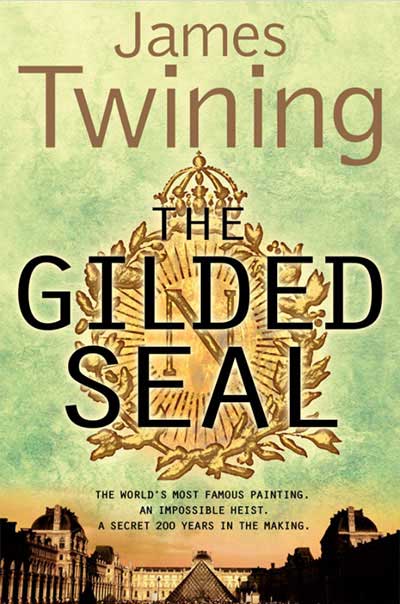Below you will find pictures and information on some of the works of art that populate The Geneva Deception.
The Crucifixion of St Peter, Caravaggio – 1600
The Crocifissione di san Pietro by Michelangelo Merisi da Caravaggio, more often known as Caravaggio, was painted for the Cerasi Chapel of Santa Maria del Popolo in Rome. The painting depicts the martyrdom of St. Peter by inverted crucifixion, as Peter asked that his death should not mirror Christ’s. The large canvas shows Roman soldiers, their faces shielded, struggling to erect the cross of the elderly but muscular St. Peter. Peter is heavier than his aged body would suggest, and his lifting requires the efforts of three men, as if the crime they perpetrate already weighs on them.
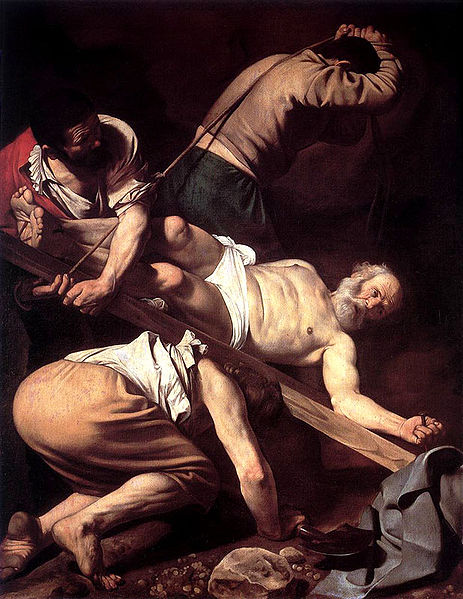
The work was comissioned along with a second Caravaggio (The Conversion of Saint Paul on the Road to Damascus, 1601), as well as an altarpiece by Carracci, by Monsignor Tiberio Cerasi in 1600. Caravaggio’s original versions of both paintings were rejected by Cerasi but when he died shortly thereafter, replacement versions, which were more unconventional than the first, were accepted without comment by the executors of his estate in 1601.
The two saints, Peter and Paul, together represent the foundations of the Catholic Church, Peter the ‘rock’ upon which Christ declared his Church to be built (Gospel of Matthew 16:18), and Paul who founded the seat of the church in Rome. Caravaggio’s paintings were thus intended to symbolise Rome’s (and Cerasi’s) devotion to both Saints, their themes of conversion and martyrdom serving as powerful propaganda against the twin threats of backsliding and Protestantism for pilgrims entering the city from the north.
In The Geneva Deception, the painting forms the inspiration for one of the murders investigated by Allegra Damico.
Judith beheading Holfernes, Caravaggio – 1599
Judith Beheading Holofernes (also known as Judith and Holophernes), is an early religious painting completed by the Italian painter Caravaggio, in 1599. It is housed in the gallery of Palazzo Barberini, in Rome.
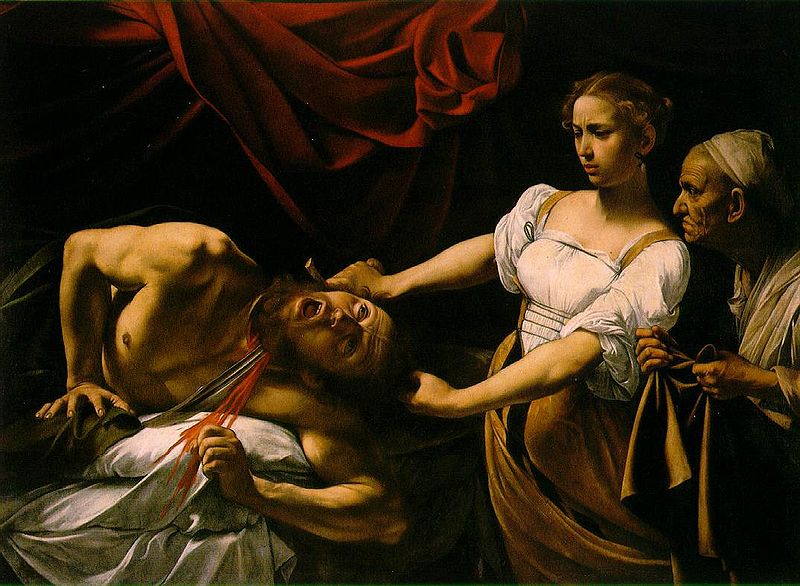
The painting draws its inspiration from the deuterocanonical Book of Judith (included in the Roman Catholic and Eastern Orthodox Old Testament of the Bible), which tells of the Jewish heroine who having sought out the Babylonian general Holofernes in his tent, got him drunk, and then beheaded him. The sight of their commander’s bloodstained head on the battlements of Bethulia puts the enemy to flight.
This is the first time Caravaggio chose such a highly dramatic subject. The original bare breasts of Judith were later covered by the semi-transparent blouse. The rough details and the realistic precision (correct down to the tiniest details of anatomy and physiology) have caused some to think that the painting was inspired by two highly publicized Roman executions of the time: that of Giordano Bruno and Beatrice Cenci in 1599.
The model for Judith is Fillide Melandroni, a well-known courtesan of the day, whom Caravaggio used for several other paintings from around this time, notably Saint Catherine and Martha and Mary Magdalene. Leonardo da Vinci’s drawing Study for a Caricature inspired the servant woman.
In The Geneva Deception, the painting forms the inspiration for one of the murders investigated by Allegra Damico.
Eileen Grey art deco furniture
Kathleen Eileen Moray Gray (1878 – 1976) was an Irish furniture designer and architect, now regarded as the most important female designer/architect of the 20th century, if not of all time.
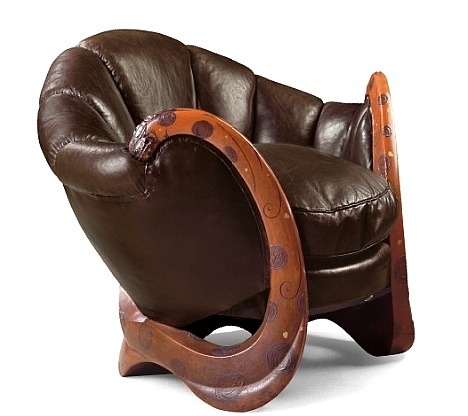
The leather armchair pictured, standing at just 24 inches high, was sold for almost €22m by Christie’s in Paris in 2009, as part of the auction of late designer Yves St Laurent’s artworks. This was a record for a piece of 20th century furniture, fetching six-and-a-half times its pre-auction estimate. Known as the Fauteuil aux Dragons or “dragons’ armchair” because of the ornate sculptures on its sweeping armrests, the one-off rounded brown leather piece was designed by Ms Gray when she was in her early 30s and after she had moved from Enniscorthy to London to study art. She became renowned for the luxurious finish of her lacquered furniture, but it was not until after her death in 1976 that she became truly recognised.
Robin Symes, a dealer implicated in the trade in illegally excavated antiquities, was jailed for contempt of court for lying about the secret (and prohibited) sale of a set of Eileen Gray furniture for $14 million. The furniture is now thought to be in Quatar.
In The Geneva Deception, the discovery of a set of Eileen Gray furniture hidden inside a shipment of car parts, puts FBI agent Jennifer Browne onto the Delian League’s tracks.
 Head of a Woman, Pablo Picasso – 1938
Head of a Woman, Pablo Picasso – 1938
The painting depicts Dora Maar, the half-Yugoslav woman who was Picasso’s lover for nine years. Valued (conservatively at $10m), it is was stolen from a Saudi Prince’s yacht, ‘Coral Island’ in 1999, while moored in the harbour at Antibes, France.
In The Geneva Deception, Tom sees the painting in the private appartments of a yacht moored in the harbour at Monte Carlo.
View of the Sea at Scheveningen, Vincent van Gogh – 1882
View of the Sea at Scheveningen was painted by Vincent van Gogh in 1882 in the town of Scheveningen in the Netherlands. It shows a foaming, stormy sea and thundery sky, executed on the spot at the beach resort near The Hague. The artist fought against the elements, as the gusting wind embedded grains of sand in the wet paint. The painting was stolen from the Van Gogh Museum in Amsterdam in 2002, along with Congregation Leaving the Reformed Church at Nuenen, worth about $8million.
The two men responsible, (one an international art thief called Octave Durham known as “The Monkey” for his ability to elude police) climbed a ladder they found leaning against the museum walls. In plain view of busy park across the street, they climbed up to a second story window, broke the glass with their towel-wrapped elbows, and left by way of a rope ladder holding the two works.
Although the thieves were caught on the museum’s security cameras, they managed to avoid capture for two years. In 2004, police arrested Durham in Spain and his accomplice in Amsterdam, and later convicted them using DNA evidence from hats found at the scene. Since neither painting has been recovered, some experts wonder if the thieves might be smart enough to take advantage of an outdated Dutch law that says an art thief owns what he steals 20 or 30 years after the crime – as long as he can prove he’s the one who stole it…
In The Geneva Deception, Tom sees the painting in the private appartments of a yacht moored in the harbour at Monte Carlo.
 Portrait of Jacqueline, Pablo Picasso – 1961
Portrait of Jacqueline, Pablo Picasso – 1961
Portrait of Jacqueline” is a black, gray and white Cubist oil of Jacqueline Roque, Picasso’s second wife, whom he married in 1961.
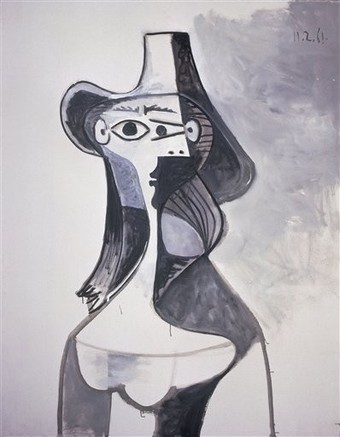
The painting was stolen in 2007, along with Maya and the Doll, from the Left Bank home of Picasso’s granddaughter Diana Widmaier-Picasso. The theft appeared to be the work of professionals, because the appartment’s alarms were neutralized and there were no signs of a break-in. The paintings have been valued at $66 million.
The Art Loss Register, which maintains the world’s largest database on stolen, missing and looted art, currently lists 444 missing Picasso pieces, including paintings, lithographs, drawings and ceramics, making him the world’s “most stolen” artist.
In The Geneva Deception, the painting is in the hands of Delian League “accountant” Ronan D’Arcy and later destroyed in a fire.
Straight Flush pinball machine, Williams – 1970
Straight Flush was an electro-mechanical coin operated single player pinball machine, manufactured in 1970 by Williams. Designed by Williams legend Norm Clark, the machine featured an up post between flippers and a playfield spinner which awarded cards or jokers, with high scoring hands giving extra balls.
In The Geneva Deception, master watch-maker Max Ziff owns a Straight Flush machine as part of his extensive collection of vintage pinball machines.



